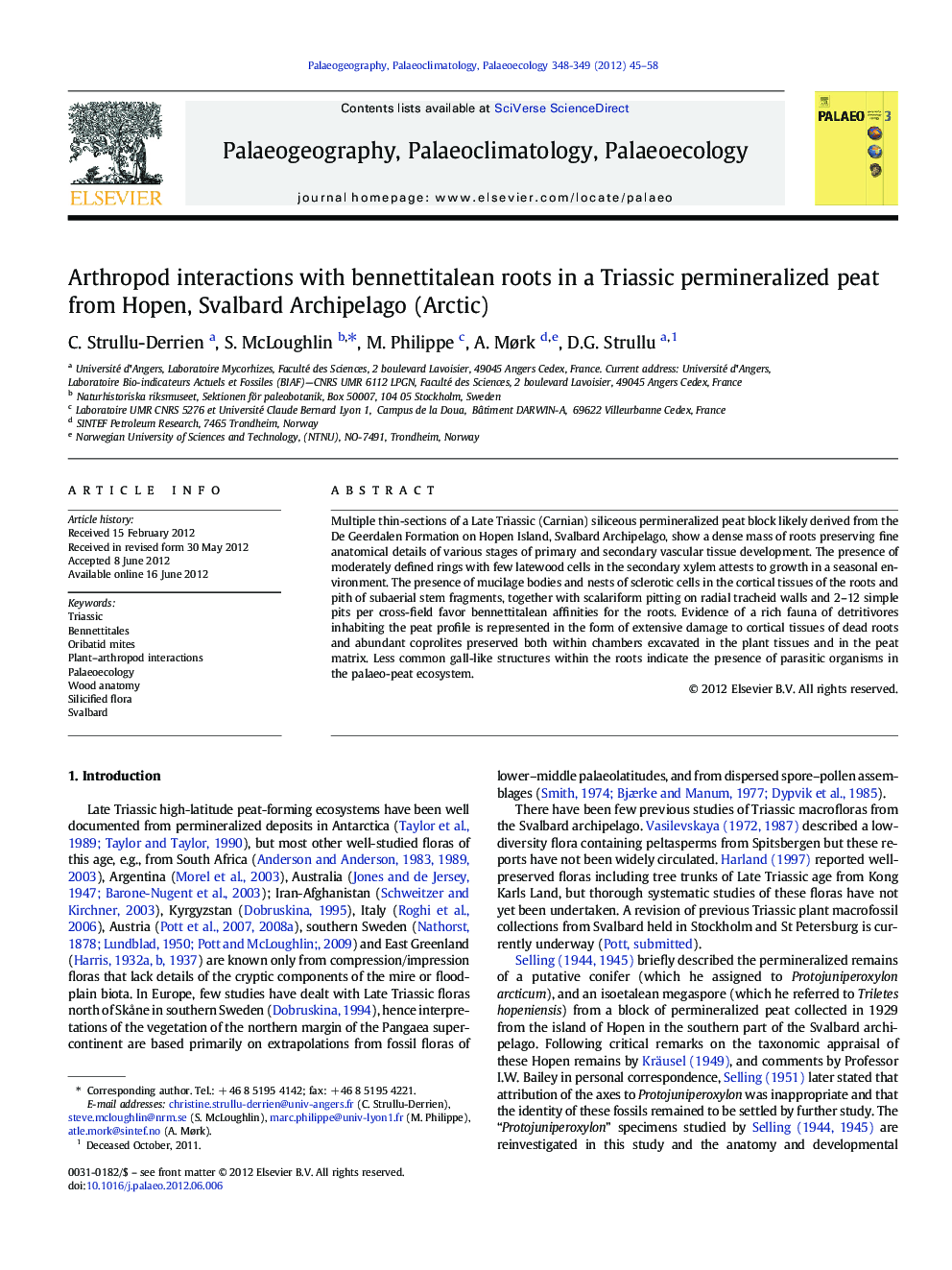| Article ID | Journal | Published Year | Pages | File Type |
|---|---|---|---|---|
| 6350529 | Palaeogeography, Palaeoclimatology, Palaeoecology | 2012 | 14 Pages |
Multiple thin-sections of a Late Triassic (Carnian) siliceous permineralized peat block likely derived from the De Geerdalen Formation on Hopen Island, Svalbard Archipelago, show a dense mass of roots preserving fine anatomical details of various stages of primary and secondary vascular tissue development. The presence of moderately defined rings with few latewood cells in the secondary xylem attests to growth in a seasonal environment. The presence of mucilage bodies and nests of sclerotic cells in the cortical tissues of the roots and pith of subaerial stem fragments, together with scalariform pitting on radial tracheid walls and 2-12 simple pits per cross-field favor bennettitalean affinities for the roots. Evidence of a rich fauna of detritivores inhabiting the peat profile is represented in the form of extensive damage to cortical tissues of dead roots and abundant coprolites preserved both within chambers excavated in the plant tissues and in the peat matrix. Less common gall-like structures within the roots indicate the presence of parasitic organisms in the palaeo-peat ecosystem.
Graphical abstractDownload high-res image (321KB)Download full-size imageHighlights⺠Permineralized bennettitalean roots are preserved in a Triassic peat from Svalbard. ⺠Growth rings indicate the plants experienced a moderately seasonal climate. ⺠Gall-like structures in the roots indicate parasitism in Bennettitales. ⺠Borings and coprolites in the roots indicate saproxylophagy by oribatid mites.
